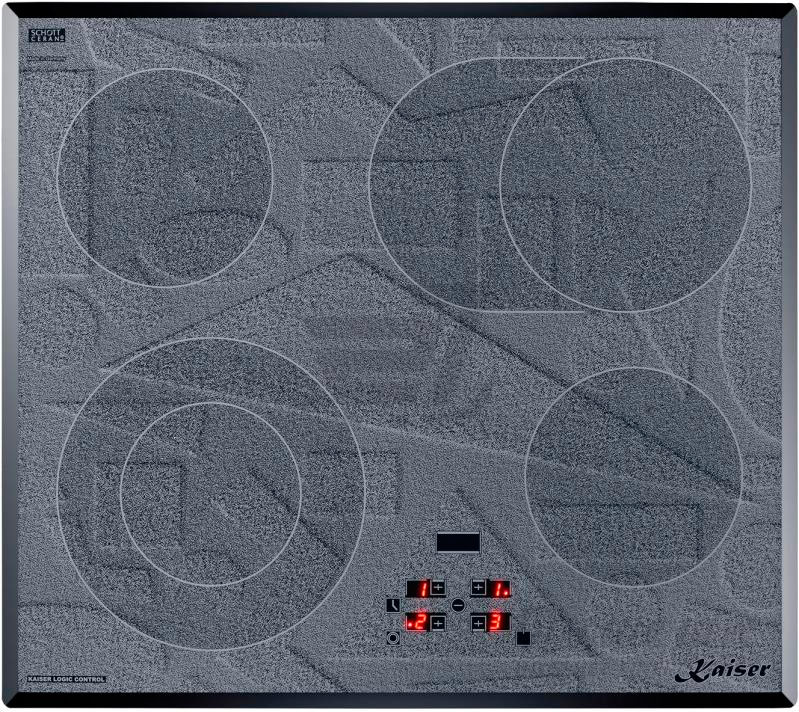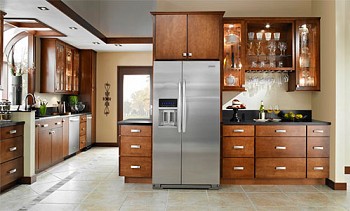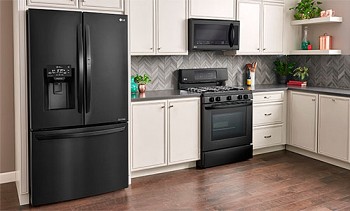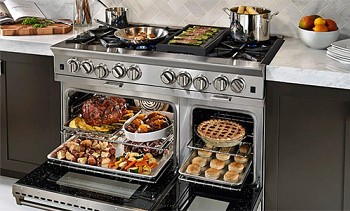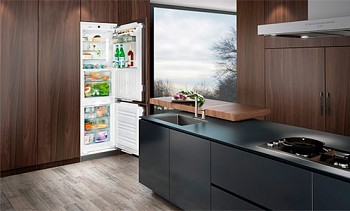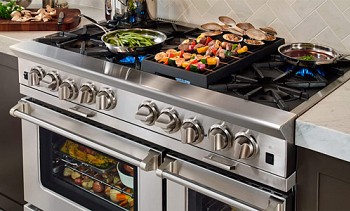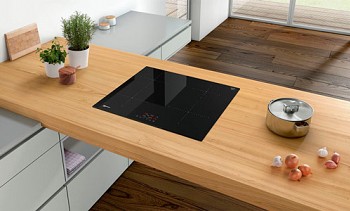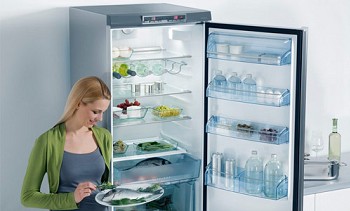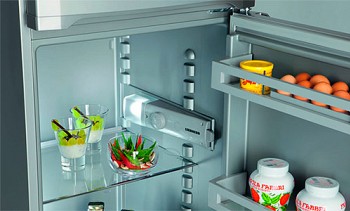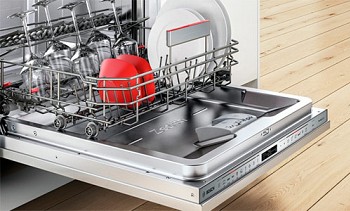Induction hobs have become very popular lately. Have you also decided to keep up with friends and acquaintances and are you ready to go to the store for new appliances for your kitchen? However, before choosing an induction hob, it is worth considering: do you really need it? Will such a stove make your daily life more comfortable, or are you just trying to follow fashion?
Does the induction panel have any advantages over the ordinary electric stove that you already have - with cast-iron “pancakes” or with Hi-Light burners? It turns out there is, and a lot!
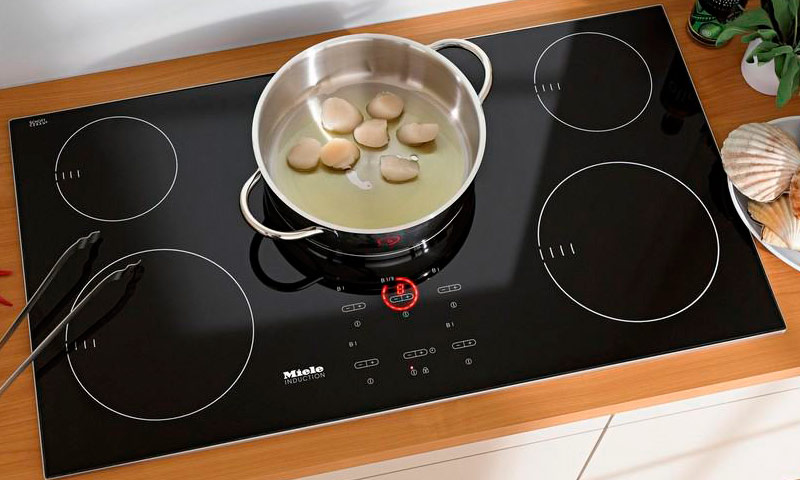
- The advantages of induction hobs
- The principle of operation of induction hobs
- Dependent and independent hobs
- How to determine the number of burners, their shape and size
- How to choose a hob size
- Power and energy efficiency
- Functions to watch out for
- Control Panel
- Hob design
- Requirements for cookware for induction hobs
- A few words about the negative effects of induction on the human body
The advantages of induction hobs
- Induction panels can significantly save time spent on cooking dinner. They really heat up much faster than other types of stoves. Speed is perhaps one of their main advantages.
- Induction is characterized by a lightning reaction to any changes in settings. The weakening or intensification of heating occurs immediately after making adjustments to the mode. We can say that ideal conditions have been created for the preparation of dishes of any complexity.
- The glass-ceramic surface itself does not heat up during the operation of the stove - only the pan standing on it heats up. This means that the risk of burns is minimized.
- Induction hobs consume energy very economically. Among stoves, they have the highest efficiency.
- According to the functionality laid down in them, modern induction panels are undoubtedly leading among cooking appliances.
- Induction hob combines advanced technology to ensure the reliability and durability of the appliance, intuitive controls and stylish ultramodern design.
Agree a lot of advantages. And if you are not stopped by the high price of this miracle, as well as myths about the dangers of electromagnetic radiation, get ready to go to the store.
The principle of operation of induction hobs
What determines the main distinguishing qualities of induction cookers - high heating rate, quick response to changes in settings, relatively low power consumption? How do induction panels differ from other stoves? First of all, the principle of work.
An induction panel, unlike other types of panels, does not have a heat source. In a gas burner, such a source is a flame generated during gas combustion, in an electric stove - a heating element that becomes hot when an electric current passes through it. Inside the induction panel you will not find anything like heating elements. Induction coils are hidden under its glass-ceramic surface, which, when the stove is turned on, only slightly heat up.
Induction hob device

1. Temperature sensors.
2. Aluminum bracket.
3. Ferrites.
4. Wiring coils.
5. Induction coils (hobs).
6. Control Panel.
Despite the slight heating of the coils, the water in the pan, standing on a cold hob, boils quite quickly. Miracle? No, the law of physics. The fact is that when an alternating electric current passes through the turns of a copper wire that make up the induction coil, an alternating magnetic field arises around the coil.
The field generates a vortex induction current in any metal objects in the immediate vicinity, including in the iron bottom of the pan standing on the stove. Under the influence of these currents, the pan warms up, and after it its contents.
Thus, the conversion of electrical energy into heat occurs not somewhere in the insides of the burner, but directly in the walls of the dishes. The absence of a heat transfer stage determines the main advantages of the induction cooker - fast heating and low heat loss.
Watch a video showing how the induction hob works:
Dependent and independent hobs
No matter how strange it may sound, but before choosing an induction hob, you need to decide if you need an oven? The fact is that the hob and oven can be independent and dependent.
The first are completely autonomous. They have separate control and connection and therefore can be located anywhere, even at different ends of the kitchen. You can optionally purchase devices from different manufacturers. You can even buy a hob and refuse an oven.

Independent induction hob.
The latter, as the name implies, are completely dependent on each other. They have a common control unit and are connected to each other, from which it follows that there is only one option for their installation - the hob above the oven. Both devices must be from the same manufacturer. Although such copies are sold separately, it makes sense to purchase them only in pairs.

Dependent induction hob.
Thus, the first step in choosing an induction panel will be to decide on its autonomy or, conversely, depending on the oven.
How to determine the number of burners, their shape and size
Different models of induction cookers can be equipped with a different number of burners, and the latter can be of different sizes and shapes. How to decide on these parameters?
Number of burners required
The number of burners for various induction panels can vary from 2 to 6. There are, however, models with one burner - compact portable stoves or built-in modules of the domino system.
How many stoves do you prefer? This depends primarily on the size of your family, which means how often and how much you will cook and fry. If you have a small family and / or prefer to eat out, there is no point in spending money on a full-size device. The more heating zones your induction panel has, the more dishes you can cook at the same time.
Induction panels with two heating zones are usually purchased by bachelors and childless couples. The stoves with 2-3 rings prefer the owners of small kitchens: on the one hand, this is enough to accommodate everything you need, on the other - this will not clutter up the already cramped space.

Panel with two rings.
Models with 4 heating zones are the most common and popular option: on such a hob, you can simultaneously cook the first and second dishes and boil the kettle.

Four-burner panel.
And finally, if you have a big family or you just love to cook and devote all your free time to this hobby, get a hob with 5-6 heating zones. However, be prepared for such a full-sized equipment to take up quite a bit of space in your kitchen.

Panel with six burners.
As for the location of the hobs on the hob, the manufacturers have long moved away from the standards and, in addition to the usual square layout, offer other, most unusual options. Today you can meet models in which the heating zones are located in one row, and a triangle, and a semicircle - it all depends on the shape and size of the plate.

Panel with a non-standard arrangement of rings.
Choosing an induction panel with one or another arrangement of rings, try to evaluate how convenient it will be for you to use this technique. You should easily reach the cookware no matter which burner it is on. In addition, pots and pans in adjacent heating zones should not interfere with each other.
Burner dimensions and shape
An equally important criterion for choosing an induction panel is the size of the hobs. According to this parameter, they should approximately correspond to the size of the dishes available in your home.
If the bottom of the pan does not cover 70% of the area of the heating zone, the stove will not turn on.
Typically, the diameter of the hobs of induction panels is in the range from 14 to 21 cm. It is more convenient when the stove has hobs of different sizes, designed respectively for different containers. The most “advanced” (and therefore expensive) models of induction panels are able to automatically expand or narrow the heating zone, adjusting it to the size of the bottom of the cookware placed on the hob.
On the glass-ceramic surface, the boundaries of the heating zone are usually outlined. Moreover, this is not always a familiar circle, often you can see squares, hexagons or rhombuses. In this case, the form is more likely a purely decorative function - in operation all these burners are the same.
The designation of the heating zones on the hob may differ for different models. In some, this is the highlighting of the borders of the burner in color, in others - only a cross marking the center of the zone, while others even have a uniform surface. On expensive panels, sometimes along the contour of the burners you can even see displays that reflect the power of the heating zone at the moment and the time remaining until the end of the process.
Options for designating heating zones
How to choose a hob size
The size of the induction hob is determined by the number, shape and location of the hobs. The minimum width of the stove offered by manufacturers today is 30 cm. Such a “baby” with two burners is an ideal solution for a tiny kitchen. A stove with 3-4 burners has a width of 45-60 cm, and 6 heating zones can fit on an 80-cm panel.
The difference, although not so much, may be the thickness of the induction panels. As a rule, this indicator lies in the range from 60 to 80 mm, although there are models that are thinner (up to 40 mm) and thicker (up to 100 mm).
Before choosing an induction hob, whether built-in or freestanding, make sure that it is ideally sized for your kitchen set in its dimensions.
Particularly carefully this question should be considered by lovers of non-traditional options, in particular by those who decided not to buy a standard rectangular or square hob, but, say, a hexagonal one.

Custom induction hob.
Power and energy efficiency
A stove is the main consumer of electricity in a modern non-gasified apartment. The size of your utility bills greatly depends on how economical this equipment is. That is why a zealous owner, before choosing an induction hob, will pay attention to the power of the device in the first place.
The energy consumption of the induction panel, as you understand, is determined by the number of heating zones and their power. The power of one burner usually lies in the range from 1 to 3 kW. In this case, the burners of one panel, as a rule, differ from each other.
For example, a four-burner stove may have burners of the following power:
- one burner can be low power (1 kW);
- one - increased power (3 kW);
- the remaining two are of medium power (1.5 kW).
The total power of the device in the above example is 7 kW, which is exactly the average indicator for induction hobs.
As you can see, in a unit of time they “eat up” a little more electricity than household stoves with other types of burners. However, there is one but significant “but.” It takes about 15-20 minutes to boil a two-liter pot of water on a regular cast-iron burner, while the induction one will cope with the same task in just 5 minutes.
This means that the energy consumption when using an induction panel will be 3-4 times less than when using a conventional electric stove of the same power.
Comparison of the efficiency of stoves with different types of heating will help to more clearly evaluate the energy efficiency of induction hobs.
Comparison of the efficiency of various hobs:
 |  |  | |||||||
|---|---|---|---|---|---|---|---|---|---|
| Induction hob | Hi-Light hobs | Gas burner hobs | |||||||
| Efficiency | 90-93% | 55-60% | 30-50% | ||||||
As you can see, induction panels very efficiently use the energy they consume. This is due to minimizing the loss of thermal energy, because heat is generated not somewhere in the "bowels" of the burner, but directly in the bottom of the dishes.
Functions to watch out for
How economical a stove is is a question that primarily worries the landlord. The hostess, who has to stand at this plate every day, is more interested in the possibilities of the latter, her functionality. Modern induction hobs do a lot, we will consider only some of their functions, which, from our point of view, should be paid special attention to when choosing a technique.
Ranges of adjustment of degree of heating
One of the main disadvantages of conventional electric stoves is the inability to smoothly control the degree of heating of the burners. Induction panels, alas, are also absent, however, the problem is almost completely leveled due to the presence of a large number of temperature conditions.
In some expensive models, their number can reach 20. However, as the experience of those who used such plates shows, 20 modes is already an overkill. So that when cooking, you do not have difficulties with setting the required temperature, we recommend that you give preference to hobs, which have at least 14 power modes. Even the most demanding housewife will be quite enough 16 modes.
Booster
In many models of induction panels, adjacent coils are interconnected and, if necessary, can "share" their power with each other. When activating a function called Booster (in some models it can be PowerBoost or Power), the heating power of one burner increases for a short time due to another.
The power of the “fueled" burner usually increases to 2.5-3.5 kW, and in some models even to 4.5 kW. Usually Booster is used in cases where you need to quickly bring to a boil a large volume of water.
Fast start
Due to the use of a fundamentally different heating method, induction panels are more economical than other household stoves. At the same time, they save not only electricity, but also your time. The function of automatic boiling will further reduce the duration of cooking dinner.
If the hostess, before choosing the mode in which the dish is to be cooked, activates this function, then the hotplate will start working at maximum power, trying to bring the water in the pan to a boil. When this goal is achieved, it will automatically switch to the originally set cooking mode. None of us wants to spend all our free time in the kitchen, and the automatic boiling function will save us from this need as much as possible.
Heat mode
The function of keeping the food warm is very popular among many housewives, but, strangely enough, it is not found in all induction panels.
This function allows you to maintain the temperature of the contents of the pan or pan at the level of 60-70 ° C, which means that by the time the family members deign to finally gather at the dinner table, the finished dish will not burn out and will not dry out.
Timer
More recently, a timer on stoves was a rarity. I must say, this is rather strange: firstly, this function is in great demand among buyers, and secondly, its implementation is quite simple from a technical point of view and does not require serious efforts on the part of manufacturers.
Today the situation has changed: timers can be seen, if not at all, then at least on the majority of manufactured induction panels.
This function can be implemented in different ways.
1. The simplest option is an alarm clock, at the end of the allotted time, it emits an audible signal, which should remind the hostess that it is time to appear at the stove.
2. The more serious option is a timer with automatic shutdown. Such a person will give a command to stop heating when the user-specified time has elapsed. In the most “advanced” models of induction cookers, a timer with a switch-off allows you to set the duration of the operation not of the entire panel, but of each of the heating zones individually.
Some manufacturers began to install Eco timers on their induction panels, designed to save energy: Eco will turn off the heating a little earlier than the appointed time, which allows the maximum use of residual heat.
Protective shutdown
To prevent breakage of the hob due to overheating, the protective shutdown function will help. When a signal is received from the temperature sensors that the permissible temperature has been exceeded, the cooling fan will automatically turn on.
If this measure is not enough, the system will be forced to turn off the cooking rings. When the temperature reaches an acceptable level, the automation will restore the process with the previous settings.
Control lock
The lock of the buttons on the control panel of the device, popularly referred to as "child protection", which more accurately reflects its purpose, is in high demand among buyers in whose families have offspring of preschool age.
This function will not allow unsolicited "helpers" to turn on the stove or knock down the settings of the mode specified by the mother.
Power limitation
If the wiring in your apartment is old and therefore not designed for heavy loads, you can limit the maximum power of the induction panel. This does not mean that you have to work on a “half-dead” stove, unable to boil water in a pan.
In this case, you can fully use the burners, but not all, but only two out of four. This function can only be activated from time to time, for example, when other high-power household appliances work simultaneously with the induction panel.
Pause
The Stop & Go function allows you to pause the cooking process for several minutes by transferring the burners to the minimum power level. The pause made it possible for the hostess to leave the kitchen for a short while and not to worry at the same time about a dish requiring special attention.
Of course, one could simply turn off the stove by removing the pan from it, and then, upon returning, turn it back on. However, in this case, it would be necessary to enter all the settings again. With Stop & Go, this is not necessary: when the function is deactivated, the induction panel will immediately begin to work in the previously set mode.
Another function to suspend the process - the Cleaning pause - has not yet gained much interest from customers or mass distribution.The Cleaning pause is intended for a short 30-second shutdown of heating and blocking the buttons on the control panel, which allows the user to wipe the panel - to collect, for example, spilled liquid or spilled grains.
Control Panel
Modern induction panels look more like elements of spaceships than household appliances. The birth of such an association is greatly facilitated by the appearance of the control panel.
Here you can see many touch buttons - separately for each power level, and touch sliders, which can be not only linear, but also circular, and the TwistPad magnetic switch in the form of a rotary removable disk. In some models, each burner is equipped with an individual set of touch buttons or a slider.

Magnetic switch in the form of a rotary removable disk.
Information on the operation of the device can be displayed in different ways. Many models have a circular display for each burner, and the numbers that you can see inside this luminous circuit correspond to the selected settings.
With their help, you can easily assess the situation on the stove: the current power level in a particular heating zone, timers, etc. But liquid crystal touch TFT displays are still a rare phenomenon in the world of induction hobs. Today they can be seen only on some premium devices.
Manufacturers are constantly working on improving the control unit, and all in order to simplify your “communication” with the induction panel as much as possible. There are a lot of ways to control the equipment, you just have to understand which one will be the most convenient for you.
Hob design
Many women who choose an induction panel, first of all pay attention not to its technical characteristics, but to the appearance and design. If you try to find a rationale for this approach, then it will no longer seem so ridiculous to you.
Indeed, the hostess, experiencing constant aesthetic discomfort at the sight of her stove, will no longer be able to be quite creative in the process of cooking. Of course, she will get quite tolerable food, but culinary masterpieces are unlikely.
Most induction panels are available in a dark color that fits perfectly with many styles of kitchen interiors. The hob is typically made of glass-ceramic, although induction panels coated with tempered glass are occasionally found. The latter are somewhat cheaper, but despite this they are in less demand, because glass is a more fragile material, which means that special care must be taken when working with it.

Black hob.
Manufacturers apply inscriptions and badges to the glass-ceramic surface of some models to facilitate control of the device, and sometimes even various patterns.
Hob design options
Very often, just such a print will allow you to "fit" the standard black plate to the existing (or planned) interior style. If your kitchen is decorated in a country style, try to choose a model whose hob is decorated with a floral pattern. And in the hi-tech interior, a plain black panel will fit perfectly, without designating heating zones and other icons and symbols.
Silver or white induction panels look very interesting in the kitchen, however, they are much less common than black ones. Light cooking surfaces have an undeniable advantage from a practical point of view: grease spots are not so noticeable on a light background.

White hob.
However, any dirt is very easy to remove from glass ceramics, because it practically does not absorb anything. This means that to keep the hob in perfectly clean condition, you won’t need excessive efforts, regardless of whether it is dark or light.
Requirements for cookware for induction hobs
Having made the decision to purchase an induction hob, be prepared for the fact that you will have to significantly update your kitchen utensils. Not any pan or pan is suitable for induction, but only made of a material with ferromagnetic properties - steel, cast iron and other iron alloys. This means that you will have to part with aluminum, copper, brass, ceramic dishes.
What to do if you are at a loss to answer what material your favorite saucepan is made of? It is enough to conduct a simple experiment. Bring an ordinary magnet to her bottom. Attracted, then everything is in order - the old pan will serve you faithfully. The main thing is that the bottom of the “old woman” be perfectly flat, otherwise the burner may not turn on.
However, you will not even need to carry out this simple experiment. The hob will not allow you to make a mistake. Induction coils will not start to work until dishes from the proper material are placed on the surface of the stove.
The stove will not function if the diameter of the bottom of the dishes turns out to be less than 12 cm. This means that it will also ignore such small metal objects as knives, spoons, spatulas, etc. In other words, ruining a smart household appliance is “wrong »Utensils are simply impossible.

When buying dishes, look at the signs printed on its bottom. In the photo above, a designation is highlighted indicating that this pan can be used for an induction hob.
A few words about the negative effects of induction on the human body
Many potential buyers have already realized all the advantages of using induction for cooking, but they are prevented from acquiring an induction panel by the fear of the potential danger that the electromagnetic field created by this stove allegedly carries. These fears are based mainly on rumors and speculation.
There is indeed a magnetic field near a working burner. However, before we panic about this, let's clarify a few points.
1. Firstly, there is a similar field near any live electrical network, near any plugged in electrical outlet, near mobile phones and other gadgets, etc. There are plenty of sources of electromagnetic field around us, and induction cookers on this list are far from leaders.
2. Secondly, the power of electromagnetic radiation rapidly decreases with increasing distance, and in a few tens of centimeters from the device it will already be negligible.
Believe me, in our modern world there are many things that pose an incomparably greater threat to our health than a household induction stove.
Caution is given to induction panels (not to avoid completely, but to keep a distance) should only be people with pacemakers. Any electronics under the influence of an electromagnetic field can fail, but only the failure of such medical devices carries a real danger to life and health.







